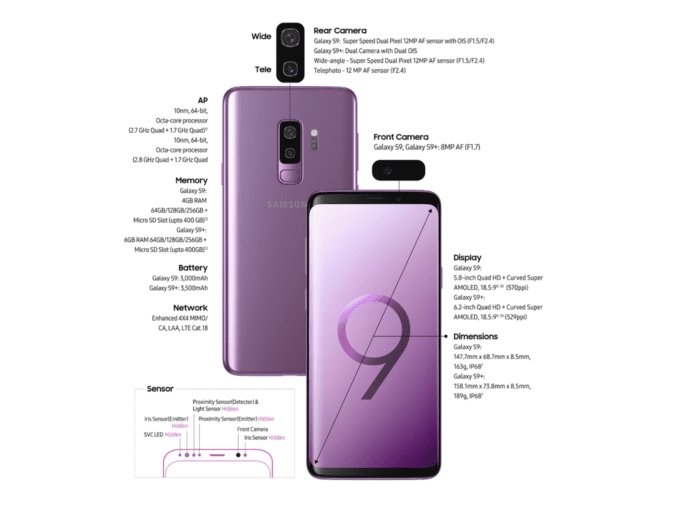BARCELONA–Earlier this month Qualcomm Technologies, Inc., announced an impressive line up of more than a dozen device OEMs that plan to use the chipmaker’s Snapdragon 845 mobile platform. That Samsung was not included in that line up did not go without notice, but, now, it appears Samsung wanted to sit on the news for two more weeks and make the announcement at its Unpacked event the day before Mobile World Congress 2018 started.
Qualcomm’s new chipset will be used in the Galaxy S9 and S9+. “We are proud to have recently expanded our strategic relationship with Samsung to continue our joint efforts to bring breakthrough mobile experiences to consumers,” Qualcomm SVP and General Manager of Mobile Alex Katouzian said.
Some of the highlights of the chipset, which Qualcomm announced at an event in Maui in December, include the Spectra 280 ISP for “ultra HD” images; Adreno 630 visual processing subsystem to support XR capabilities; and support for high-speed, gigabit LTE connectivity with the X20 LTE modem, which can hit peak download speeds of 1.2 Gbps using LAA, 4×4 MIMO, five-channal carrier aggregation and dual SIM-daul VoLTE.
“Samsung is built on a heritage of delivering meaningful innovations and is driven by a commitment to defying barriers,” EVP and Head of Mobile R&D TM Roh said. “The Galaxy S9 is built for the way we use our smartphones to communicate and share experiences today.”
Here’s a detailed look at the Snapdragon 845.
In what is essentially Samsung’s answer to the Apple iPhone X, Samsung added facial recognition functionality called Intelligent Scan, which combines iris scanning and facial recognition.
David McQueen, research director at ABI Research, said in a note, “For Samsung to keep competing with Apple and other rivals, it needs to keep differentiating its core features and services, closely integrating hardware, software, and services, but this is getting harder and harder to achieve in the smartphone market. New features at the high end, such as edge-to-edge displays, biometrics, and AI are all being used by its competitors, so it is now about how well these can be seamlessly integrated into the user experience and how users can best interact with them. While Apple has managed to integrate a facial recognition solution into its offering without creating any sort of user learning curve, this will be a fundamental requirement for Samsung and one it must emulate and achieve with features like “Intelligent scan” if it is to stay competitive.”
Key features of the Galaxy S9 and S9+ include:
- A new Super Speed Dual Pixel sensor and dual aperture lens for even better low-light shots and super slow-motion video capabilities.
- The Bixby personal assistant, which is also integrated into the Galaxy S9 and Galaxy S9+ camera and uses augmented reality to provide helpful information, and an update that allows for New Bixby live translation of foreign languages.
- Enhanced entertainment experience with powerful stereo speakers tuned by AKG and supported by Dolby Atmos and a refined edge-to-edge Infinity Display
- The new SmartThings app that brings together Samsung’s existing IoT services into one single smart experience

